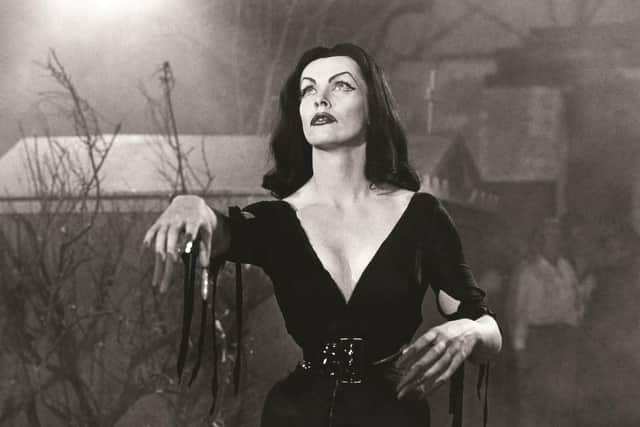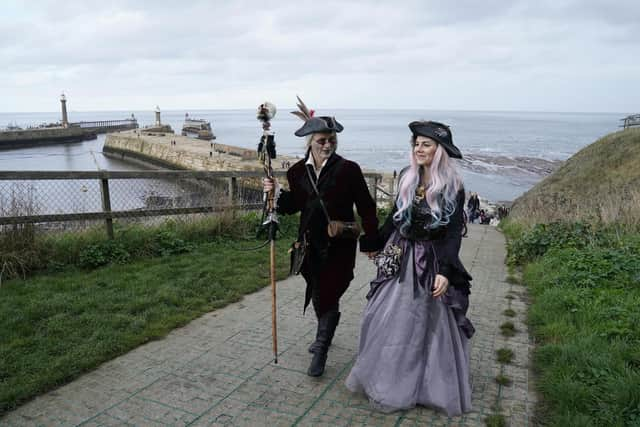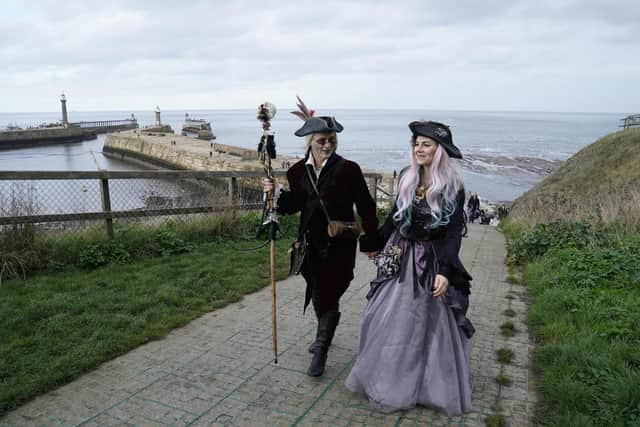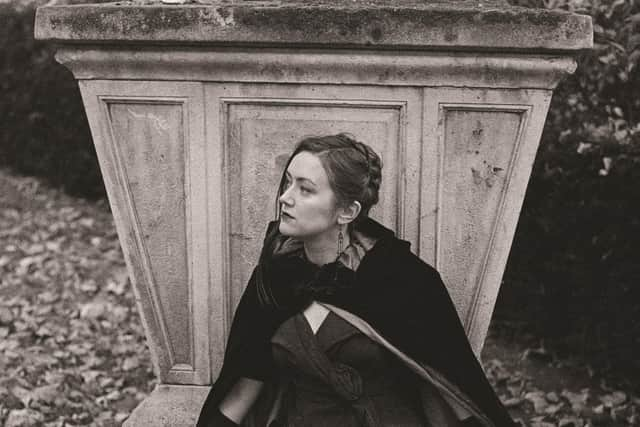The history of gothic fashion from barbarians to the Brontes and the Whitby Goth Weekends
“There are other parts of the country that have magical folklore – Cornwall has a lot of fairies – but I think there is something more gothic about Yorkshire,” she says. “When you cross that bit from York to Whitby, it's what you think the Yorkshire Moors would be like, so vast and gothic.”
The Whitby Goth Weekend concept was started by Jo Hampshire in 1994. She had received such a lot of interest after advertising for fellow goth penpals that she decided to organise a meet-up. Now goths from across the world go there every April and October for music, mingling, film screenings and to showcase their finest fashions.
Advertisement
Hide AdAdvertisement
Hide AdGoths, says Katie, came of age in the 1980s, having evolved with the youth-obsessed society that began in the 1960s. But so-called gothic styles of fashion remain strong with their moody, extravagant, social media-compatible look.


As well as social media swelling the ranks, gothic fiction on the English Literature syllabus in schools might also play a part among young uptakers, she thinks. Indeed the Brontes are among her own favourite gothic icons, and she points out that Emily had a dress patterned with lilac thunder and lightning.
Katie’s book, Gothic Fashion: The History from Barbarians to Haute Couture, tells the story of gothic style, beginning with the original Goths, a Germanic tribe who sacked Rome in AD 410, through to the 1750s and the rise of the Gothic and Romanticism, to Victorian Gothic, punks and present-day modern goths.
Black, she points out, was seen as ostentatious in mediaeval times because it was costly to dye to that colour. Wearing black for mourning was not widespread until the 19th century, but the Victorians ensured its status as the colour of death. “After Prince Albert’s death in 1861, mourning practices became more regimented and fashionable than ever, meaning that gothic looks helped define the era. Many of the hallmarks of the modern goth look either originated or were popular in this era, including long skirts, corsets, crinolines, capes, top hats, tailcoats and great coats.”
Advertisement
Hide AdAdvertisement
Hide AdKatie, 36, loves the drama of Gothic fashion and the way it draws on historical fashion.


“My grandmother kept hold of a lot of her clothes, and her mother’s clothes,” she says. “My Aunty Michelle was the more gothic of my aunties and I got one of her black velvet dresses when I was a teenager. I was quite a bookish child and enjoyed watching period dramas. The big ones were the ‘90s Pride and Prejudice and the ‘90s Little Women.”
Originally from Bristol, Katie went to the University of Leeds to study Creative Writing. She travelled around Europe and India then headed to London, and began working in school libraries, and studied for an MA in Fashion History at London College of Fashion. She became a costume librarian working with schools and now works at the Blandford Fashion Museum near Bournemouth as museum operations manager.
“Fashion is always reinventing itself and drawing on historical influences,” she says.
Advertisement
Hide AdAdvertisement
Hide AdKatie’s favourite gothic icons include movie actress Theda Bara, vamp of the 1910s silver screen, while more modern icons include Robert Smith of The Cure and burlesque artist Dita Von Tease. “She has brought the glamorous element to gothic fashion,” she says. “And I love the way Daphne Guinness dresses. She always looks real cool with her hair and high glamorous gothic image.”


The appeal of gothic fashion is undeniably widespread and eclectic. And it is not all about showing off, far from it.
“It means different things to different people,” Katie says. “There is an element of escapism and I think there is also an element of protection. I have heard people say people are dressing in a gothic way to draw attention to themselves, but actually, for myself when I’ve done it, and for other people that dress in a Gothic fashion, it's the opposite.
“You’re dressing that way because you want to, but also you really don’t want people to look at you or have attention drawn to yourself. You do feel more protected, almost as if you are putting on an armour. You feel less exposed.”
Advertisement
Hide AdAdvertisement
Hide AdThere is also creativity and wanting to express yourself and your passions. Katie says: “A lot of people say, when they watch period drama, ‘oh, I wish we could still dress like that’.”


Gothic style is not all black, and purples, pinks, reds and oranges can all be part of the mix. On the day of our interview, Katie is wearing a patchwork velvet skirt in dark tones with blacks red and purples, a long sleeve black top and black jewellery. Later she will don a dark orange velvet coat, and for meetings and smart outings she might wear 1940s and 1950s styles, although she does wear lighter shades in the summer. She collects vintage Laura Ashley, especially long dresses in velvets, with floral prints in darker tones.
But black reigns supreme among goths, and sometimes for quite practical reasons. “Black is quite versatile and can look elegant quite easily but also can be hardwearing,” she says. “In some ways, black is a safe colour to experiment with. And black suits most people.”
Gothic Fashion: The History from Barbarians to Haute Couture by Katie Godman is published by Unicorn at £30. Her novel Fortune is available on Amazon.
